Search here
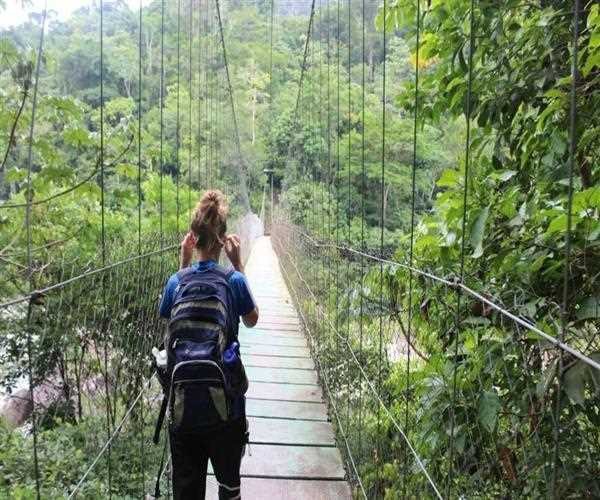
28-Mar-2019
Top 9 Central America Classic Adventures
Here is a list of Top 9 Central America Classic Adventures which you should never miss.
Hike Pico Bonito Park, Honduras
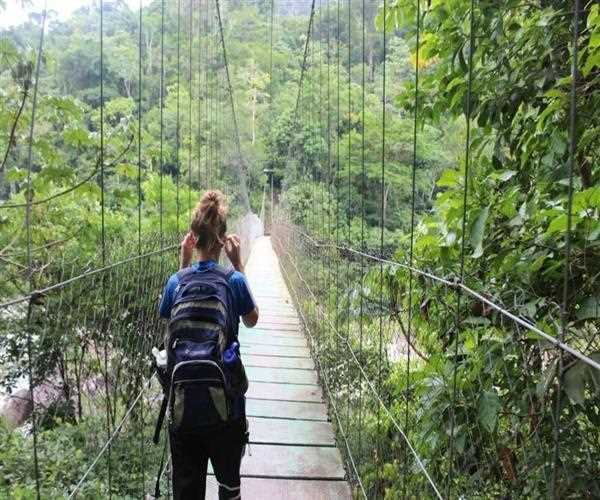 Pico Bonito translates to "beautiful peak", but the view of this highest mountain top in the rugged Nombre de Dios range is just one reason you can't miss this national park. Besides the great hiking you'd expect, you'll find exceptional birding, and the Rio Cangrejal makes for thrill-filled white-water rafting. Wildlife includes ubiquitous howler monkeys, not to mention jaguars, pumas, and almost 300 species of birds. Climbing that beautiful peak may be tempting, but it's also daunting: it'll take expedition-level energies and some days to complete the task. Less rambunctious travellers will find that half-day hikes are satisfying. To wind down, check out the Lodge at Pico Bonito, Honduras's most luxurious eco-lodge, located in the buffer zone of the national park. And for some coastal relaxation, hit the oasis of La Ceiba, just 15 kilometres away.
Pico Bonito translates to "beautiful peak", but the view of this highest mountain top in the rugged Nombre de Dios range is just one reason you can't miss this national park. Besides the great hiking you'd expect, you'll find exceptional birding, and the Rio Cangrejal makes for thrill-filled white-water rafting. Wildlife includes ubiquitous howler monkeys, not to mention jaguars, pumas, and almost 300 species of birds. Climbing that beautiful peak may be tempting, but it's also daunting: it'll take expedition-level energies and some days to complete the task. Less rambunctious travellers will find that half-day hikes are satisfying. To wind down, check out the Lodge at Pico Bonito, Honduras's most luxurious eco-lodge, located in the buffer zone of the national park. And for some coastal relaxation, hit the oasis of La Ceiba, just 15 kilometres away.
Birding at Copan Ruins: Honduras
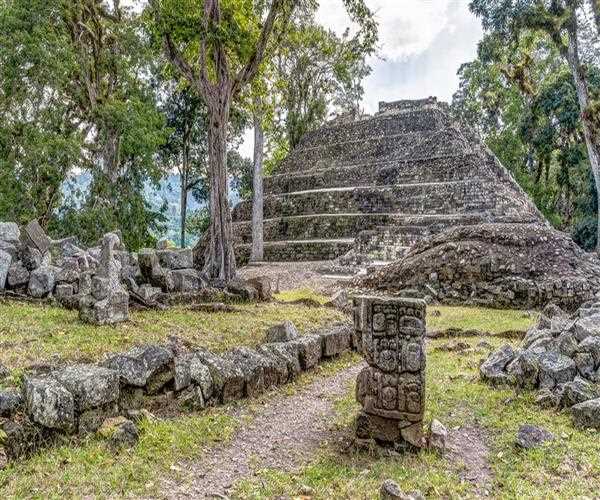 Attention, birders: It's true that most people come to the town of Copan for the Mayan ruins, a spectacular sight worth the effort of getting here. But while you can't overlook the ruins, Copan's birding is amazing. And one guide has developed a knack for giving avid birdwatchers and naturalists the chance to see tropical birds such as the quetzal, the trogon, and the toucan in their natural habitat.
Attention, birders: It's true that most people come to the town of Copan for the Mayan ruins, a spectacular sight worth the effort of getting here. But while you can't overlook the ruins, Copan's birding is amazing. And one guide has developed a knack for giving avid birdwatchers and naturalists the chance to see tropical birds such as the quetzal, the trogon, and the toucan in their natural habitat.
You'll also search for the motmot and its pendulous tail feathers. The Mayan word for motmot is Xukpi, so Xukpi Tours is the logical place to start. Jorge Barraza, who runs Xukpi, will loan you a pair of binoculars, put you in the back of his blue Samurai, lead you up muddy mountain paths, drag you up waterfalls (he always carries rope), and show you as many of those 300 species as possible.
Dive Bay Islands: Honduras
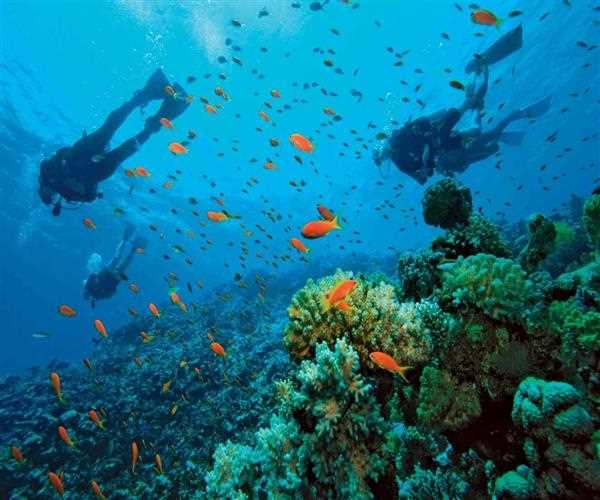 The Western Hemisphere's longest coral reef: It sounds impressive, but nothing can prepare you for actually exploring this 185-mile-long underwater paradise. Stretching from the Yucatan down through offshore Belize to Honduras, the Great Maya Reef system is second only to Australia's Great Barrier Reef in size. And the fish and coral will open your eyes to colors and shapes you've never seen. Doing it is easy: just hop over to the islands of Roatan, Guanaja, or Utila and sign up with a dive shop. These Bay Islands make diving as easy and user-friendly as riding a bike, whether you're wet behind the ears or a regular Jacques Cousteau. Roatan's your best bet, though it's the most crowded island. Utila's reefs are less spectacular than Roatan's, but this island offers some of the lowest prices for scuba diving anywhere in the world, as well scuba lessons. If you're coming to the Bay Islands to dive, consider staying in one of the several top-notch dive resorts that offer complete packages with meals and two boat dives a day.
The Western Hemisphere's longest coral reef: It sounds impressive, but nothing can prepare you for actually exploring this 185-mile-long underwater paradise. Stretching from the Yucatan down through offshore Belize to Honduras, the Great Maya Reef system is second only to Australia's Great Barrier Reef in size. And the fish and coral will open your eyes to colors and shapes you've never seen. Doing it is easy: just hop over to the islands of Roatan, Guanaja, or Utila and sign up with a dive shop. These Bay Islands make diving as easy and user-friendly as riding a bike, whether you're wet behind the ears or a regular Jacques Cousteau. Roatan's your best bet, though it's the most crowded island. Utila's reefs are less spectacular than Roatan's, but this island offers some of the lowest prices for scuba diving anywhere in the world, as well scuba lessons. If you're coming to the Bay Islands to dive, consider staying in one of the several top-notch dive resorts that offer complete packages with meals and two boat dives a day.
Explore Monteverde: Costa Rica
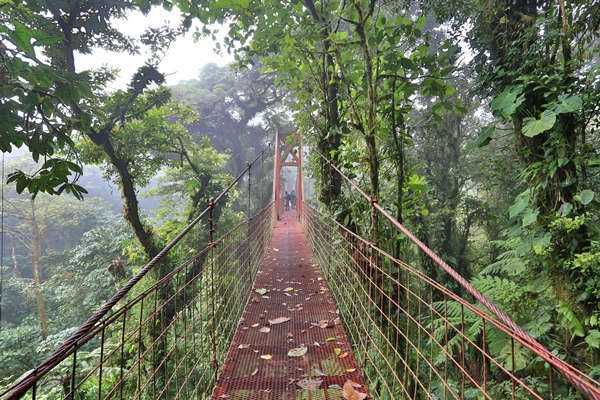 This well-known private reserve, which covers 22,000 Costa Rican hectares, has more than 400 bird species (including the quetzal, which is best seen in the early morning between January and May), monkeys, tapirs, and felines, all in its dense, dark boundaries.
This well-known private reserve, which covers 22,000 Costa Rican hectares, has more than 400 bird species (including the quetzal, which is best seen in the early morning between January and May), monkeys, tapirs, and felines, all in its dense, dark boundaries.
The reserve was initially created as a watershed in 1951 when Quakers arrived in the area, and in 1972 it was expanded and made into the formal reserve. Visitors are limited to one hundred at a time so arrive early or prepare to spend extra time at the visitor's center. There are many well-marked trails; detailed information is available at the visitor's center.
Turtle-Watch at Tortuguero: Costa Rica
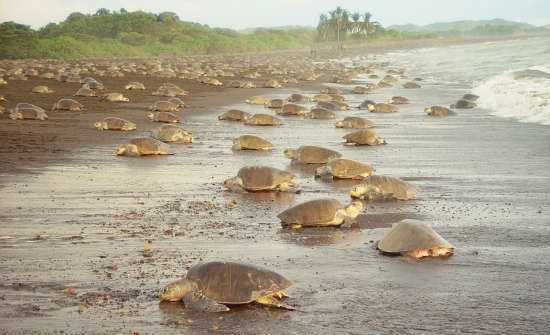 It's the turtles that'll lure you to this park, a prime nesting site for green, leatherback, and hawksbill reptiles, who arrive mostly between July and September each year to lay their eggs on the beach. You'll have to take to the waters to get here too, since the park's accessible only by boat. But the journey's worth it: Depending on the night, the beach can be littered with turtles.
It's the turtles that'll lure you to this park, a prime nesting site for green, leatherback, and hawksbill reptiles, who arrive mostly between July and September each year to lay their eggs on the beach. You'll have to take to the waters to get here too, since the park's accessible only by boat. But the journey's worth it: Depending on the night, the beach can be littered with turtles.
The beach, of course, has become an essential ecological center, and as a result, almost 19,000 hectares were set aside as national park in 1970. Besides the famous turtles, the park also attracts avine species, including green macawas, great curasswos, and migratory birds from North America. Other denizens include tapirs, jaguars, and monkeys; West Indian manatees are frequently spotted in the canals. The small town has frequent blackouts, so be sure to have your flashlight handy. There's a small visitor's center and hotels in the village.
Walk Corcovado: Costa Rica
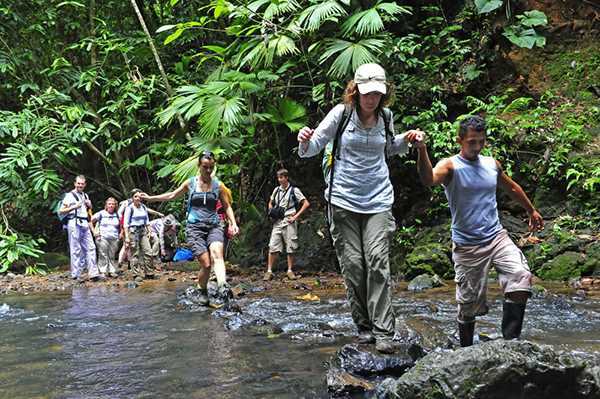 Corcovado is not a place that's easy to get to. But the fact that so many people come to this 41,788-hectare national forest on the Osa Peninsula in southwestern Costa Rica attests to its beauty and magic. What's all the fuss about? A biodiversity that's practically unmatched. You'll find a quarter of all Costa Rica's tree species, 367 species of birds, 140 of mammals, and 117 reptiles and amphibians. So how much hiking will you have to do? You have to walk at least a day to get to the headquarters at Sirena from the Los Pinos ranger station, itself a half day's walk from the town of La Palma on the Golfo Dulce. Trails have been developed around the station, where you can easily spend days visiting the park. Permission to visit Corcovado should be obtained from the reserve office in Puerto Jiminez or by contacting Proyecta Osa Natural.
Corcovado is not a place that's easy to get to. But the fact that so many people come to this 41,788-hectare national forest on the Osa Peninsula in southwestern Costa Rica attests to its beauty and magic. What's all the fuss about? A biodiversity that's practically unmatched. You'll find a quarter of all Costa Rica's tree species, 367 species of birds, 140 of mammals, and 117 reptiles and amphibians. So how much hiking will you have to do? You have to walk at least a day to get to the headquarters at Sirena from the Los Pinos ranger station, itself a half day's walk from the town of La Palma on the Golfo Dulce. Trails have been developed around the station, where you can easily spend days visiting the park. Permission to visit Corcovado should be obtained from the reserve office in Puerto Jiminez or by contacting Proyecta Osa Natural.
Hike Arenal Volcano: Costa Rica
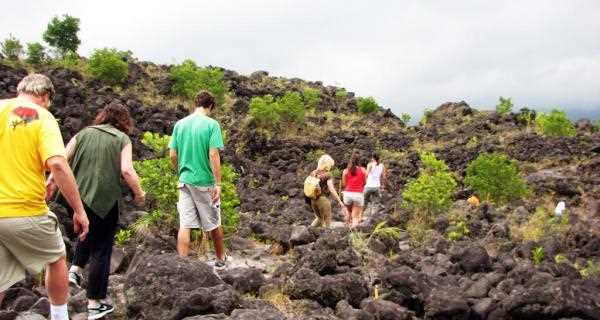 Get up close and personal with a volcano. Arenal, of course, is a Central American must-see, and you can hike around it. And you'll get more than just a pot of hot lava: The area around the volcano also includes a 2,900-hectare national park, an enormous reservoir, and a botanical garden.
Get up close and personal with a volcano. Arenal, of course, is a Central American must-see, and you can hike around it. And you'll get more than just a pot of hot lava: The area around the volcano also includes a 2,900-hectare national park, an enormous reservoir, and a botanical garden.
Cloud and tropical forest surround the base of the volcano, which is 6 kilometres from the town of Fortuna. Arenal itself is some 1,633 meters high and has been continuously active since July, 1968. Every night lava pours down the side of the volcano and huge boulders shoot into the air. Nearby Lake Arenal is used for windsurfing, waterskiing, sailing, and fishing. Always take best hunting boots for safe forest hiking.
Experience Belize's Caves: Belize
 What's the most novel way to go through sacred Maya caves? Float! Less than a half-hour drive south of Belmopan, the nation's capital, is a jungle-covered mountain range riddled with limestone caves, circular sinkholes, and underground rivers. And you can take a guided float trip on an inner-tube through one of the many flooded caves known for their crystalline stalactites and thousand-year-old artifacts. These caves, sacred to the ancient Maya, are home to sightless fish and crabs, as well as bats. One underground river rises for only a few hundred feet, creating the shimmering centerpiece for Blue Hole National Park. Nearby is Five Blues Lake, a beautiful body of water whose colors change by the hour. Surrounding all this are thick forests criss-crossed by hiking and bridal trails. Several local lodges provide accommodations.
What's the most novel way to go through sacred Maya caves? Float! Less than a half-hour drive south of Belmopan, the nation's capital, is a jungle-covered mountain range riddled with limestone caves, circular sinkholes, and underground rivers. And you can take a guided float trip on an inner-tube through one of the many flooded caves known for their crystalline stalactites and thousand-year-old artifacts. These caves, sacred to the ancient Maya, are home to sightless fish and crabs, as well as bats. One underground river rises for only a few hundred feet, creating the shimmering centerpiece for Blue Hole National Park. Nearby is Five Blues Lake, a beautiful body of water whose colors change by the hour. Surrounding all this are thick forests criss-crossed by hiking and bridal trails. Several local lodges provide accommodations.
Canoe Community Baboon Sanctuary: Belize
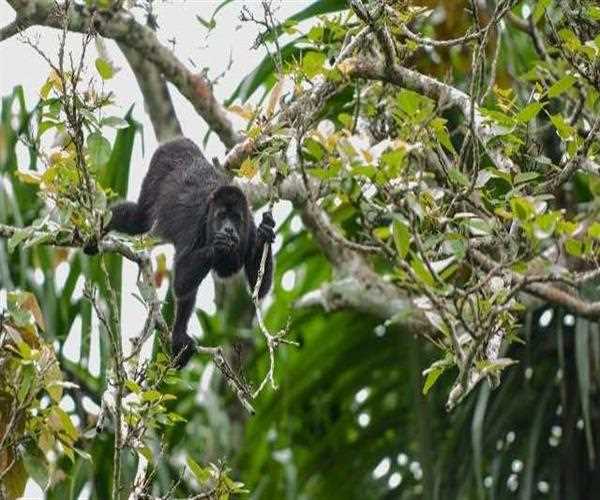 Don't fret: Those eerie, rasping calls booming out of the woods are coming from black howler monkeys, not the aggressive baboon. A quirk of the local Creole dialect is that monkeys are called baboons, which are native only to Africa. Thus the name of a unique sanctuary for these black howlers, an endangered species that thrives along the Belize River. This is an easy day trip from Belize City, 30 miles to the southeast, or you can spend the night with a local family or in a nearby lodge. Hire one of the knowledgable community guides, who can find the monkeys and describe their habits. Besides numerous hiking trails, the river is a recommended mode of travel. Rent a powerboat or canoe in Bermudian Landing, the sanctuary's main village, where you're required to check in at the excellent museum and visitors' center. Bring binoculars or telephoto camera lenses.
Don't fret: Those eerie, rasping calls booming out of the woods are coming from black howler monkeys, not the aggressive baboon. A quirk of the local Creole dialect is that monkeys are called baboons, which are native only to Africa. Thus the name of a unique sanctuary for these black howlers, an endangered species that thrives along the Belize River. This is an easy day trip from Belize City, 30 miles to the southeast, or you can spend the night with a local family or in a nearby lodge. Hire one of the knowledgable community guides, who can find the monkeys and describe their habits. Besides numerous hiking trails, the river is a recommended mode of travel. Rent a powerboat or canoe in Bermudian Landing, the sanctuary's main village, where you're required to check in at the excellent museum and visitors' center. Bring binoculars or telephoto camera lenses.
Join Our Newsletter
Subscribe to our newsletter to receive emails about new views posts, releases and updates.
Copyright 2010 - 2025 MindStick Software Pvt. Ltd. All Rights Reserved Privacy Policy | Terms & Conditions | Cookie Policy
